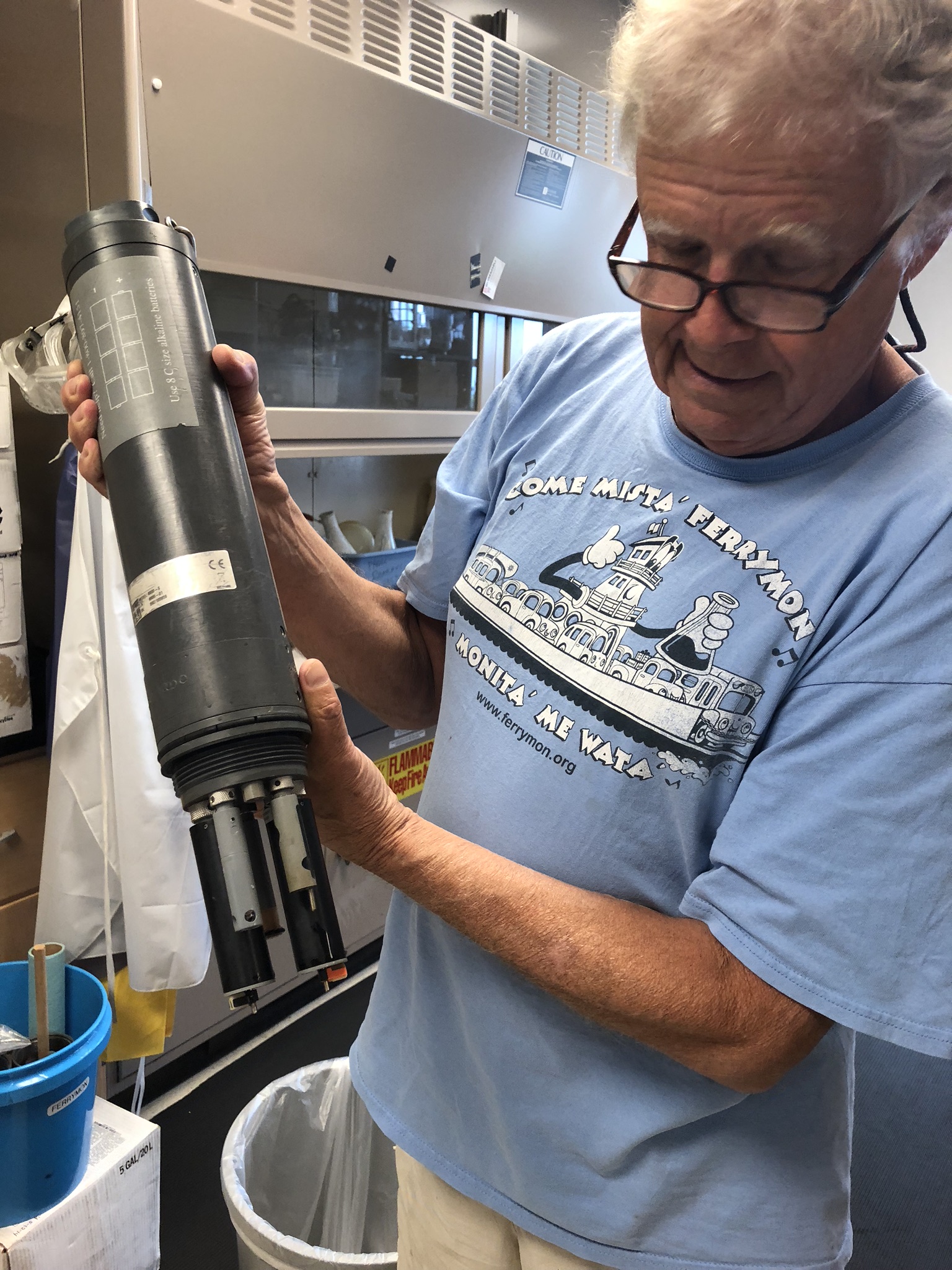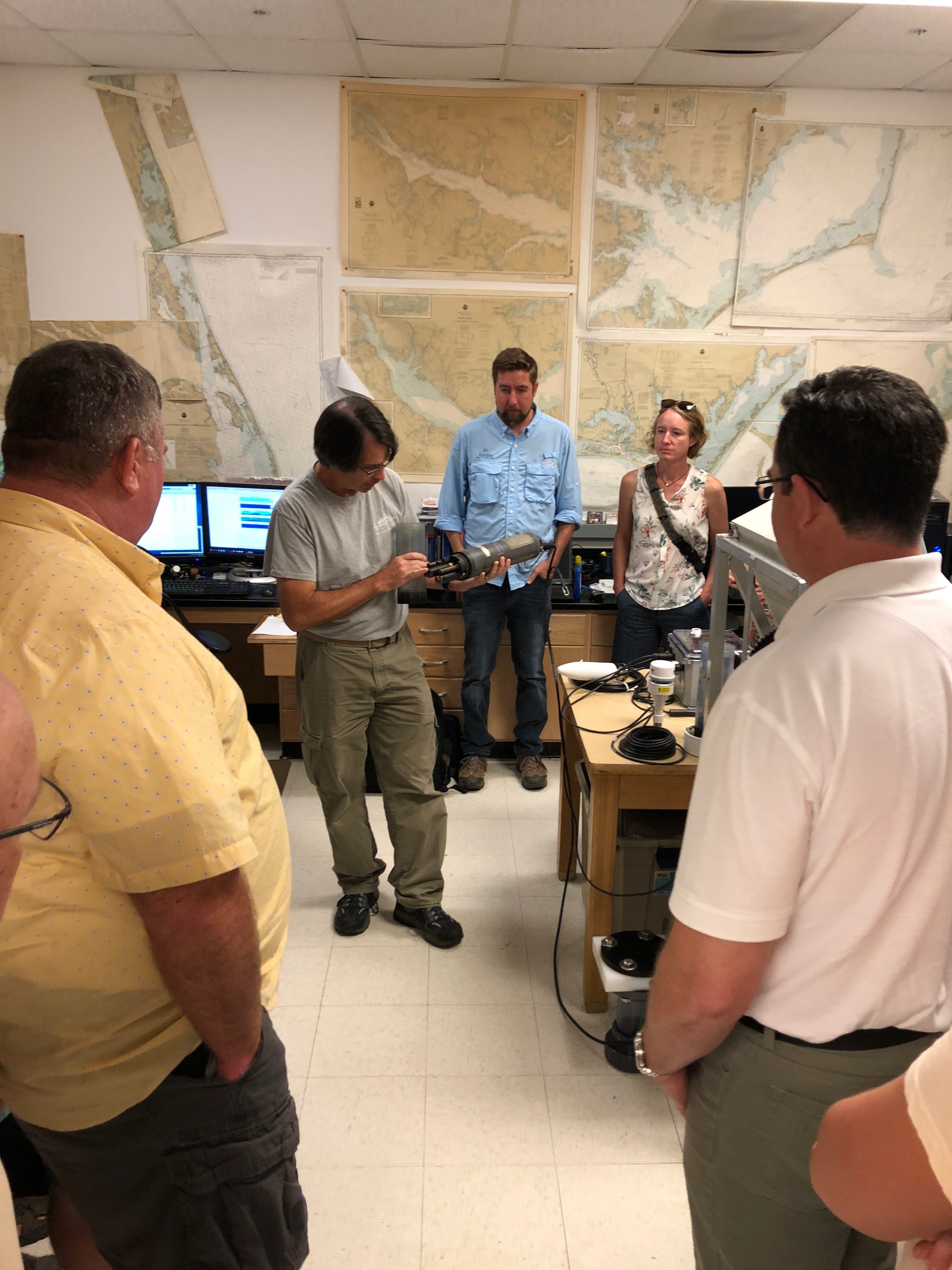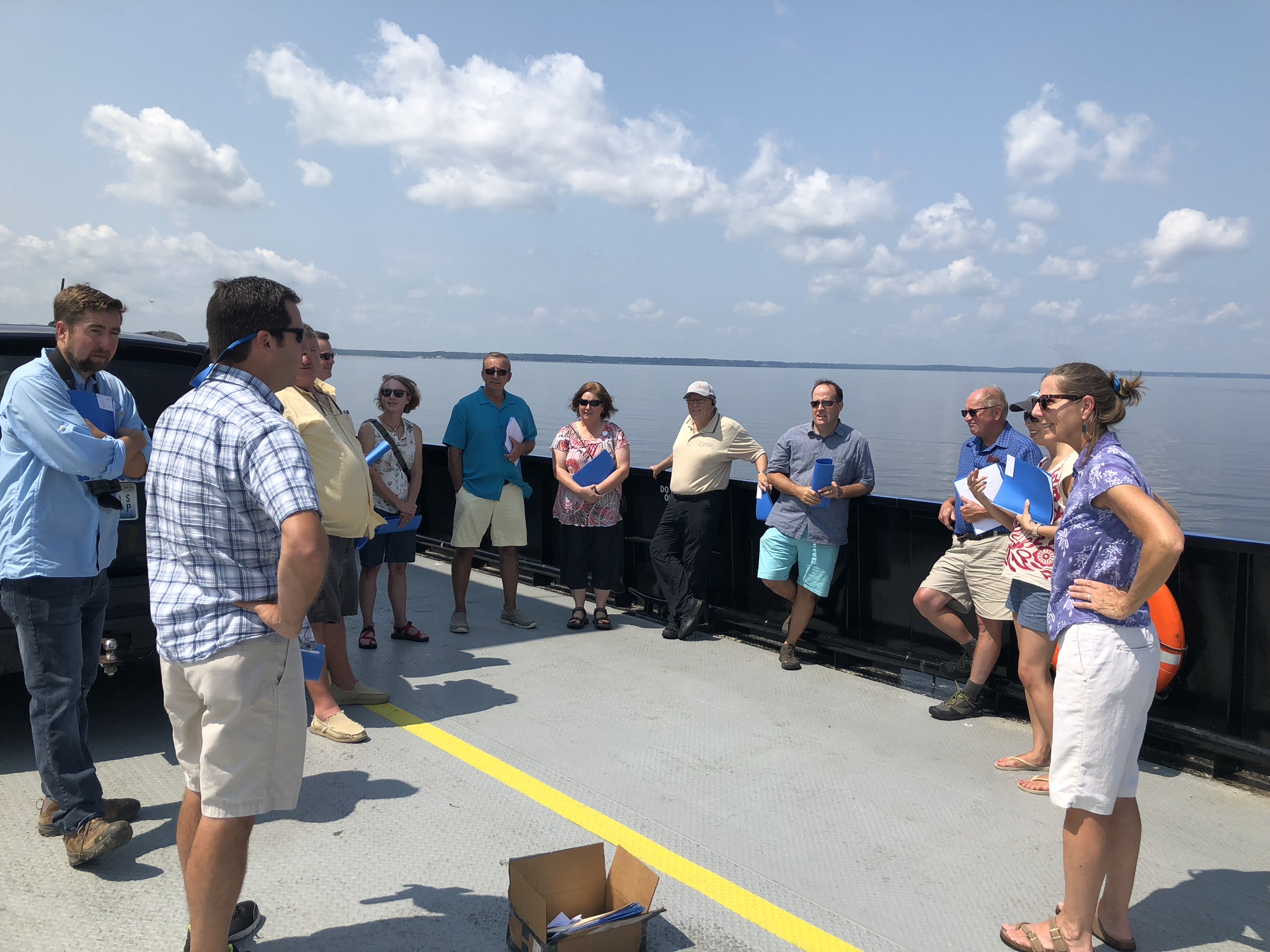The FerryMon program is a ferry-based water quality monitoring program housed within UNC-Chapel Hill’s Institute of Marine Sciences that operates in NC’s Pamlico Sound estuarine system. NC Forever has advocated for funding the program since the organization’s inception. This small but efficient program collects water quality data that is used for a number of purposes from supplementing the state’s water quality data to comply with state and federal EPA standards to supporting faculty and student research. To learn more about the program, I decided to sit down with FerryMon’s co-founder and director, Dr. Hans Paerl.

Above: Dr. Hans Paerl displays a sonde, the monitoring device used for both FerryMon and ModMon. Dr. Paerl first had the idea for FerryMon when he was visiting Finland and saw an elementary water quality testing system onboard a ferry. The devastating impacts of Hurricane Floyd, which flooded large sections of Eastern NC and filled the Pamlico Sound with nutrient- and sediment-laden runoff in 1999, led to a series of algal blooms, fish and shellfish kills. Paerl and his team worked with the sonde manufacturer directly to create the modern day FerryMon system that is now used across the US and has inspired systems around the world.
Nestled within the Carolina blue walls of the UNC-Chapel Hill’s Institute of Marine Sciences in Morehead City, NC, Dr. Hans Paerl and his staff are keeping a close eye on NC’s estuary systems’ water quality. Between FerryMon and ModMon, a stationary water monitoring system covering the Neuse River Estuary and western Pamlico Sound, Paerl and his staff are able to get a holistic picture of water quality in NC’s sounds and are on the front-lines of catching concerning conditions, including harmful algal blooms, low oxygen conditions and extreme changes in salinity leading to finfish and shellfish kills. In some cases, the folks down at the Paerl Lab are the only ones monitoring certain systems, patterns and problems. Most importantly, FerryMon and ModMon are the only programs the state has for regularly monitoring water quality in the Pamlico Sound, North Carolina’s most ecologically and economically important water body.
The concept of maximizing a system already in place is what makes FerryMon, in particular, very appealing as a cost-effective program. Using ferries, which take the same route multiple times a day, produces a set of data that would be inconceivable to collect any other way. “The Neuse ferry goes thirty times a day. It’s there from five in the morning until midnight… It’s hard to pay any technicians to be out there over that amount of time,” notes Paerl.

Above: NC Forever Board Directors examine the not-yet-deployed portable FerryMon system. While the NC Department of Transportation works cooperatively with the lab, there are inherent obstacles facing a system that operates on a mode of transportation. Thanks to a grant from Duke Energy, the FerryMon team, along with UNC Engineering professor, Rick Ludic, were recently able to develop a portable FerryMon system to help navigate these obstacles faced by operating on the ferry system. This system should be ready to be deployed in October.
One of the major variables monitored by FerryMon is nutrients, specifically nitrogen and phosphorus, which when supplied in excess can promote conditions for harmful algae blooms. Paerl explained that with nutrients, the problem is much easier to prevent than fix. These nutrients are not very mobile so once they’re in the system they’re really hard to get out. The State’s struggle with nutrient-driven algae blooms is a common one. Paerl also works to mitigate toxic blue-green algae (also called cyanobacteria) blooms in Lake Taihu, China by identifying nutrients and establishing healthy thresholds that the lake can handle. The cyanobacteria that is causing the problem in China is the same genus that caused NC problems in the Neuse River in the 1980s, Microcystis.
Since he has experience working on water quality across the US and the world, I wanted to get Paerl’s take on best practices. “I think we’re doing it right in some places in NC. I think farmers in general, especially row crop farmers are very supportive of vegetative buffers… I think that’s something we’re doing right. No-till agriculture is something we’re also doing right, when possible. So we are doing lots of things right. Some of the air control regulations particularly with nitrogen compounds have been very beneficial.” Compared to his work in China, Paerl insists we should feel pretty good about where we are with water quality with one major exception. His newest concern is the Albemarle Sound. He explained that because the water is so fresh it is very susceptible to blooms and that relatives of Microcystis, Dolichospermum and Cylindrospermopsis are already present. “If I had to look into my crystal ball at where the next big problem is going to be in our riverine-estuarine systems, it would be Albemarle Sound.”

Above: NC Forever’s Board of Directors takes a ride on the Neuse River to learn more about the FerryMon system. FerryMon works by diverting a portion of the ferries’ intake water into its onboard system. The water is analyzed by a sonde and measurements are recorded to an onboard computer. The data is then sent via wireless internet in real time back to the UNC Marine Science lab.
Dr. Paerl expressed gratitude for NC Forever’s work on maintaining FerryMon’s funding and noted admiration for the organization’s unconventional approach to conservation advocacy, stating, “I think it’s a very healthy direction to go in.” The NC Forever Board of Directors recently visited the Morehead City area to take a ride on the Cherry Point ferry and visit the lab to learn more about the program and the great work being done. NC Forever remains excited to support FerryMon’s important work.


